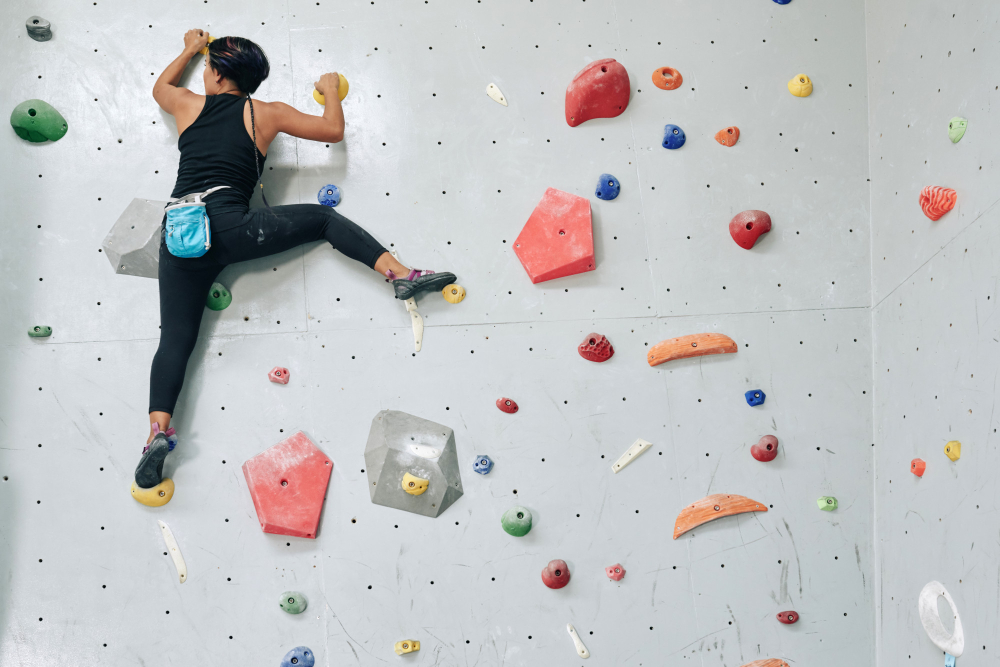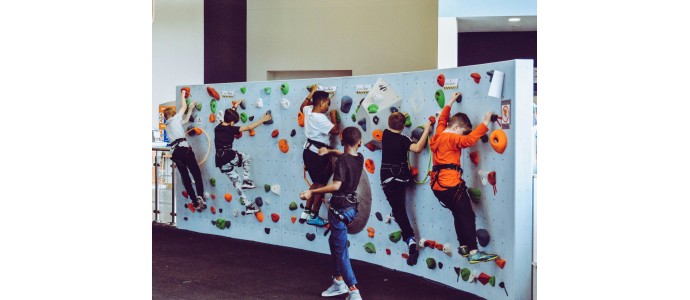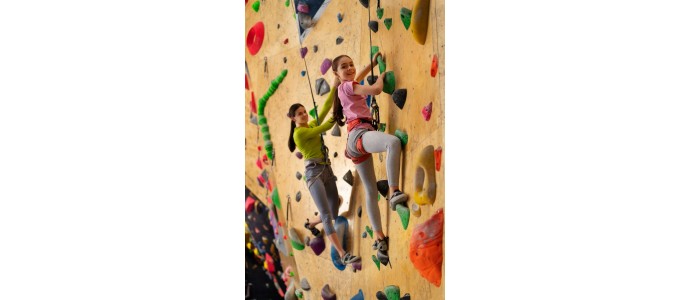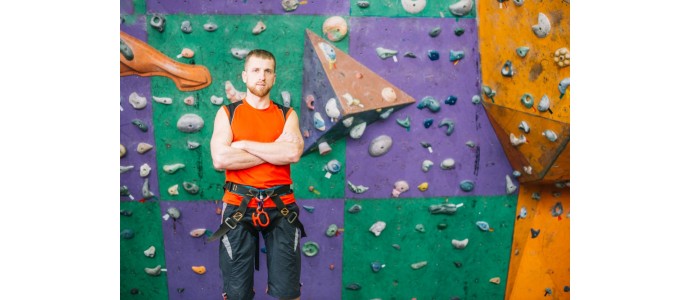What is needed for a climbing wall?
In recent years, climbing walls have seen a remarkable increase in popularity, attracting both climbing enthusiasts and those looking for new forms of exercise and entertainment. Climbing on rock-n-rams offers a variety of benefits, including complete physical training, developing problem-solving skills and significantly improving concentration and coordination. This growing interest has led many people to consider the construction of climbing walls, either for personal use or as a profitable business opportunity.
Planning of the climbing wall
Planning is the basis for building a safe and functional climbing wall. A well thought-out design not only ensures the safety of climbers, but also maximizes the use of available space and offers a varied and challenging climbing experience. The key aspects of planning a climbing wall are detailed below.
Space Assessment
Available space The first consideration is to decide whether the climbing wall will be located indoors or outdoors. Each option has its own advantages and challenges that need to be carefully evaluated.
- Interior:
Advantages: Protection against the weather, possibility of controlling the environment (temperature, lighting, etc.).
Challenges: Space and height limitations, need for good ventilation.
Example: A converted garage, storage room, or dedicated section within a gym.
- External:
Advantages: Large space, higher available height, possibility of integrating with nature.
Challenges: Exposure to climate, increased maintenance needs.
Example: Gardens, backyards, or open spaces in sports centers.
Height and width The height and width of the climbing wall is decisive for the type of climb that can be made and for the number of users that can accommodate simultaneously.
- Height:
Boulder: For bouldering, a height of up to 4 meters is sufficient. This allows short climbs and techniques without rope.
Sport climbing: Requires a minimum height of 10 meters to allow routes of greater length and difficulty.
Pros: Higher altitude allows more varied and challenging routes.
- Width:
Lateral space: Sufficient for several simultaneous routes without interference between climbers.
Safety zone: Additional space around the base of the climbing wall for mattresses and safety equipment.
Design of the climbing wall
Variety of climbing holds and volumes The strategic placement of holds and volumes is crucial to creating routes that are challenging and safe.
- Route planning:
Variety of prey: Include a mix of large, small, striped, blunt, etc., to offer a variety of grips and techniques.
Distribution: Place the dams so that routes of different levels of difficulty are generated. This can involve from simple routes for beginners to technical routes for advanced climbers.
- Incorporation of volumes:
Add volumes: Large structures that change the angle and climbing surface, providing variety and new challenges.
Strategic placement: Use volumes to create specific moves and add difficulty on simpler routes.
Types of surfaces Incorporating different slopes and structures is essential to provide a complete climbing experience.
- Vertical surfaces: Ideal for beginners and to develop basic climbing techniques.
- Slumps: Negative slopes that defy strength and endurance, ideal for intermediate and advanced climbers.
- Ceilings and Angular Ceilings: Provide technical and strength challenges, encouraging the development of advanced skills.
- Cross-country routes: Horizontal movements that develop endurance and technique.
Materials and tools needed
For the construction of a high quality climbing wall, it is essential to have the right materials and tools. The correct selection of these elements ensures the durability, safety and functionality of the climbing wall. The requirements for each category are detailed below.

Structural materials
Wood boards The wooden boards form the structural basis of the climbing wall and must be of high quality to withstand continuous use and loads.
Use high quality plywood boards for the base structure:
- Preferably 18 mm thick: This thickness provides the necessary rigidity and durability to withstand the pressure and weight of climbers.
- Wood type: Birch or pine are recommended options for their strength and longevity.
- Treatment: Ensure that the wood is treated to resist moisture and prevent deformation.
Screws and nuts The screws and nuts are crucial for joining boards together and securing the joints securely.
Various sizes to join the boards and secure climbing holds:
Wood screws: Use 6-8 cm screws to fix the boards to the frame.
Holds screws: Shorter, 4-5 cm screws specifically designed to withstand the load and tension of holds.
Anchors The anchors are essential to ensure that the climbing wall is firmly fixed to the wall, ensuring structural safety.
Quality anchors for secure wall mounting of the climbing frame:
- Expansion anchors: Ideal for concrete walls, they offer a firm fixation.
- Resin anchors: Recommended for brick walls, provide additional adhesion and stability.
Materials for climbing holds
Climbing holds Climbing holds are the grip and support points for climbers, and should be varied and of high quality.
Variety of sizes and shapes to create varied routes:
Preferably polyurethane for durability: This material is wear-resistant and provides good grip.
Types of hold: Include jugs, crimps, sloper, edges, holes (pockets), among others, to offer a diverse climbing experience.
Holds Screws Holds screws are specific and designed to withstand constant load and repeated use.
Special screws, usually with hexagonal head or torx:
Material: Galvanized steel to prevent corrosion and ensure durability.
Length: 4-5 cm, adapted to the depth of holds and plywood.
Tools
Drill A drill is an essential tool for drilling holes in wood and walls for anchors.
Preferably impact: Facilitates drilling on hard surfaces such as concrete and brick.
Features: Drill with multiple speeds and adjustable functions for greater versatility.
Drills of different diameters Drills are needed to make holes of the right size for screws and anchors.
Depending on the size of the screws and anchors:
6mm, 8mm and 10mm drill bits: To cover most of the drilling needs in climbing wall construction.
Cleaning brush To ensure that the drilled holes are free of dust and debris, a cleaning brush is used.
To clean the drilled holes:
Metal bristle brush: For effective cleaning.
Air blower: Optional to further clean the holes.
Hammer The hammer is used to insert anchors and adjust structural elements.
To insert anchors:
Rubber hammer: Recommended to avoid damaging the anchors and other parts during installation.
Allen wrench or ratchet wrench These tools are essential for tightening screws and securing the grips firmly.
To tighten the screws:
Allen wrench set: Different sizes to fit the screws.
Ratchet wrench: With interchangeable heads for greater versatility and comfort.
Level A level is crucial to ensure that all dams and structures are perfectly aligned.
To ensure that the dams are level:
Bubble level: Traditional and easy to use.




.jpg)





Comments
No comment at this time!
Leave your comment